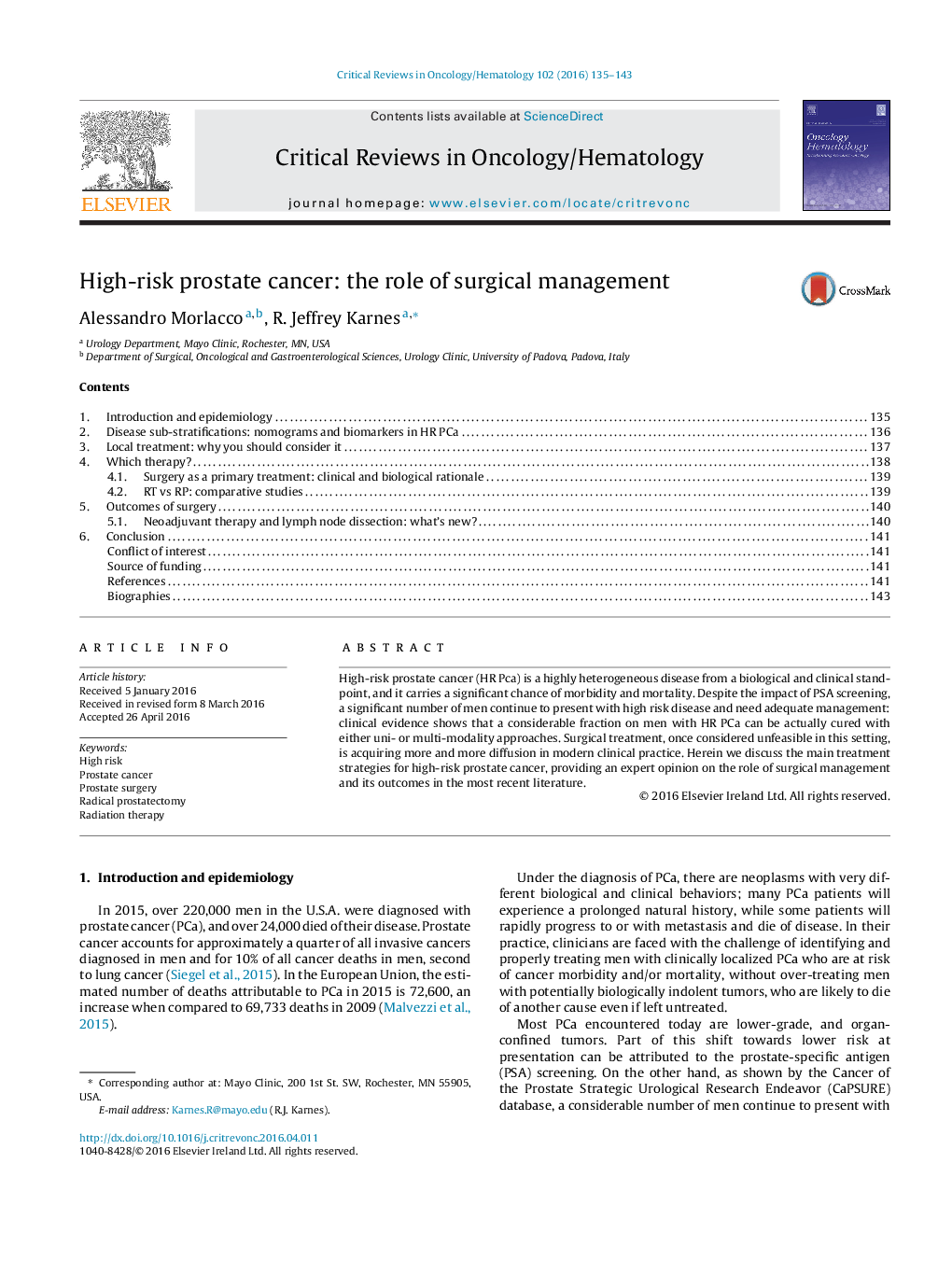| Article ID | Journal | Published Year | Pages | File Type |
|---|---|---|---|---|
| 3328541 | Critical Reviews in Oncology/Hematology | 2016 | 9 Pages |
•High risk prostate cancer (HR PCa) is still a common disease despite extensive PSA screening.•HR PCa is a highly heterogeneous disease, with many risk sub classification strategies have been proposed in the last years.•There is growing evidence that active treatment, with either radiation therapy or surgery is associated with better outcomes.•Surgery alone can achieve cure in a substantial portion of HRPCa men, and may be a valuable first step in a multimodal approach.
High-risk prostate cancer (HR Pca) is a highly heterogeneous disease from a biological and clinical standpoint, and it carries a significant chance of morbidity and mortality. Despite the impact of PSA screening, a significant number of men continue to present with high risk disease and need adequate management: clinical evidence shows that a considerable fraction on men with HR PCa can be actually cured with either uni- or multi-modality approaches. Surgical treatment, once considered unfeasible in this setting, is acquiring more and more diffusion in modern clinical practice. Herein we discuss the main treatment strategies for high-risk prostate cancer, providing an expert opinion on the role of surgical management and its outcomes in the most recent literature.
